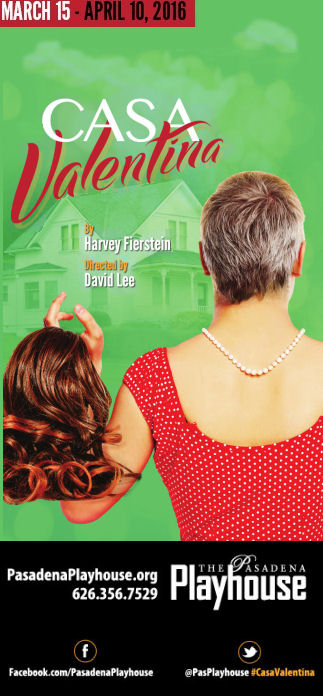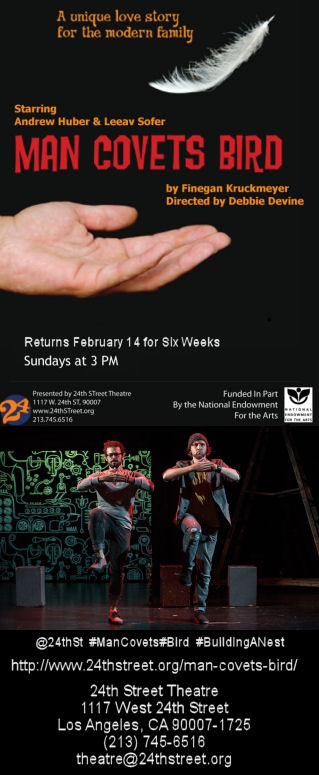
Every year on my dad’s birthday I post a remembrance that I wrote the day after he died in 2004. Today he would have been 94. As I wrote last year: As I get older, I see more and more of my father in me — and I like what I see, and I’m grateful he gave so much to me that makes me who I am.
My father was born in Flushing NY in 1922. He was the eldest of four brothers; the son of a tailor who lived over his shop. I can’t give you too many details of the early days. His mother died young, when he was in his twenties, and sometime thereafter, his family moved to Los Angeles (how’s that for glossing over details). My dad went to Southwestern School of Accounting, and was a Public Accountant. He married his first wife in the late 1940s, and my brother was born in 1952. He loved my brother very, very much. He divorced that wife in 1955, and retained custody of my brother. He married my mother in 1956, and I was born in 1960. My mother was a CPA, so they formed an accounting company of their own, Faigin and Faigin. My brother died, reportedly due to an accident (I never knew the true details) in 1970. It devistated both my parents. My mother died in 1990 on my wedding anniversary. My father remarried a year or so later to Rae, who had lost her husband. This brought me some new wonderful family members. This should bring you up to date on the familial backstory.
So, who was my dad, and what do I remember. This is a jagged collection of memories.
I remember being in Indian Guides with him, painting rocks and bark to invite people to meetings. I remember going on Indian Guide campouts with him. It is because of this that I did Indian Princesses with my daughter, continuing the tradition. I recommend this program to anyone who is a dad.
I remember going on trips with him to East Los Angeles, to visit his clients. We would hit small mom and pop grocery stores, Mexican candy companies. I’d always get sweets… and get to sort the paid bills afterwards.
I remember him taking the time to be with me.
I remember him telling bad jokes, and being enamored with old-time radio stars, such as Al Jolsen (his favorite), Eddie Cantor, Jack Benny, and so on.
I remember his teeth. Specifically, I remember how he would remove his dentures just to gross out us kids.
I remember him taking me to the Dorothy Chandler Pavillion to see musicals, starting in 1972 when my mother was too sick to attend The Rothschilds. From this came my love of musicals.
I remember him reading Robert W. Service to me, especially Bessie’s Boil.
I remember him, at the Passover Seder, reading the Four Sons. He loved to act, mug, and play with his voice to make a point during the story.
I remember him being active in the Masons and the Shriners, especially with his good friend, Raymond Schwartz. I remember him going to the Masonic Picnics.
I remember him playing bridge with my mom and their friends, the Cohens, the Schwartzes, and the Strausses. Perhaps this is where I got my love of gaming.
I remember him telling stories of his time in the Navy, when he was a pharmacists mate, 2nd class, at Camp Elliott, which is now part of Mirimar NAS in San Diego. He found it ironic that he was in the Navy, as he could never swim.
I remember his disorganized tool-bench, where eventually you could find what you need. I still have his 30 year old power drill, which I still use today.
I remember him taking care of my mother as she died of cancer, and fiercely defending her when we would fight.
In his later years, I remember him fighting with the computer, and eventually learning to use it and to use Email. However, he could never quite get the printer figured out. I would get calls from him that stuff wasn’t printing, and it was because he had been playing with the printer queue again.
I remember him cooking. He loved to cook peppers and onions in olive oil. He made a mean spaghetti sauce, and a great pot roast in tomatoe sauce. Rae says that I got my cooking skills from him, with which I must agree, as I don’t think my mom could cook.
I remember him collecting autographs and first day covers. For many, he would frame them and put them all over the walls.
I remember his love of baseball, which never rubbed off.
I remember him taking pictures. And more pictures. And more pictures. And still more pictures. I’ll probably find about 50 cameras at the house, together with probably 200 photo albums. In particular, I remember a few specific cameras: His Konica T-3 SLR, which I have. His Fuji POS, which he received at a special party my mother threw for him at the Magic Castle in Hollywood.
I remember him loving fountain pens, just like me. He had boxes of pens, and even more ink. He’s the only man I know that has a quart bottle of Schaeffer Black Quink Ink in his supply closet. There are about 6 bottles of ink on his desk (I only have 3).
I remember him being a luddite when it comes to computerizing financies. He left me loads of two-peg journal books to go through to figure out stocks and bank accounts.
I remember him being a packrat. He collected office supplies. He collected biographical books. He collected CDs. You name it, he collected it.
I remember him being a good friend and caring about other people. After my mother died and he remarried, his new wife’s children were treated the same as his natural children, with the same love. He was a second grandfather to my sister-in-law’s children. He was there when people needed him. Until his last year, he volunteered to help seniors with their taxes.
For many years, I remember him being a staunch Republican, going counter to my mother, the strong liberal. I remember him backing Nixon and Reagan. This year [nb: this was written in 2004], however, had he been strong enough, he was going to vote for John Kerry.
I remember him being a people person. He would just light up when he was around people, especially those that hadn’t heard his stories before.
I remember him being there for me and my family. We spoke weekly on the phone, something I will miss, talking about everything. He had good advice, which I grew to respect as I got older. To the youngsters reading this: listen to your parents. They’ve been their and made the same mistakes. They do know what they are talking about.
I remember his love for his granddaughter. He had pictures of her everywhere, and she loved him. I remember him taking her to Disneyland when she was three, and being there in the hospital when she had her open heart surgery at the age of four.
I remember his love for his family. He enjoyed spending time with his brothers, Herbert, Ronald, and Tom, and researching family history. [I’ll note we lost Uncle Herbert in 2011, and Uncle Tom just last year; luckily, Uncle Ron is still going strong.] When my daughter was little, we picked up a copy of Grandfather Remembers and gave it to him. He filled it out, and now it is a lasting memory for her of her grandfather. To those of you who are grandparents: take the time now to write out your memories for your grandchildren. Record an oral history. Annotate your photo albums. It is worth the time. You will create that memory that will outlive you.
I remember how he loved Yiddish and Yiddish stories. I remember him reading the Freiheit. [ETA: I think he would have been extremely proud to see his granddaughter become the Yiddish scholar that she is.]
I remember (or have discovered) how he loved his wives. I remember how he loved my mother, Nancy, even through the depths of her depression, her anger, her rages, her illnesses. I remember how he rarely lost his temper (and when he did, you needed to worry). I remember when he first told me he had met Rae, and how they quickly grew to love each other. Even though there was an age difference there, I saw the deep affection that existed between them. He chose well.
I remember how he touched people. A few months ago, I went to a funeral that was packed to the gills of people who loved the deceased. My father had friends all over the world, and helped many people.
In short, I remember a deeply caring man, who I really think was responsible for making me the way I am today (both for good and for bad). He does live on in me, and I think he lives on in my daughter as well. As long as we remember someone, they never die.


 I’m three for three.
I’m three for three.


 In the last two years, we’ve seen remarkable strides in the acceptance arena. We’ve seen homosexuals get the right to be married; we’ve been able to observe the transformation of Wheaties Box Heroes from one gender to the other. We’ve seen acceptance of a wide range of sexual preference in society, from no preference at all (asexual) to traditional preference to non-traditional preferences. We’ve seen similar understanding (perhaps not full acceptance yet) of the full range of gender identities. But this hasn’t been comfortable for many; arguably, many wish for those simpler days when the roles and nature of the sexes were much more separate, and those roles and orientations that went against “what nature intended” were best hidden from sight.
In the last two years, we’ve seen remarkable strides in the acceptance arena. We’ve seen homosexuals get the right to be married; we’ve been able to observe the transformation of Wheaties Box Heroes from one gender to the other. We’ve seen acceptance of a wide range of sexual preference in society, from no preference at all (asexual) to traditional preference to non-traditional preferences. We’ve seen similar understanding (perhaps not full acceptance yet) of the full range of gender identities. But this hasn’t been comfortable for many; arguably, many wish for those simpler days when the roles and nature of the sexes were much more separate, and those roles and orientations that went against “what nature intended” were best hidden from sight.

 Jukebox musicals (so called because they mine the discography of a particular artist) typically take one of three forms: there is the straightforward presentation of an artist’s music (think Sophisticated Ladies), perhaps with vignettes for each song; there is a biographic presentation of the artist that uses the songs to tell the artists life (think Jersey Boys); and then there is the show that attempts to take the artist’s songs and form them into a coherent story that makes the songs work in a musical context (think Mamma Mia). All Shook Up, the show we saw last night at Santa Monica’s
Jukebox musicals (so called because they mine the discography of a particular artist) typically take one of three forms: there is the straightforward presentation of an artist’s music (think Sophisticated Ladies), perhaps with vignettes for each song; there is a biographic presentation of the artist that uses the songs to tell the artists life (think Jersey Boys); and then there is the show that attempts to take the artist’s songs and form them into a coherent story that makes the songs work in a musical context (think Mamma Mia). All Shook Up, the show we saw last night at Santa Monica’s  This themed collection of news chum all has to do with transitions — and I’m not talking about recent obituaries (such as
This themed collection of news chum all has to do with transitions — and I’m not talking about recent obituaries (such as 
 If you read my blog a lot, you’ll know that I listen to a lot of podcasts — so many, that it is a job to keep up. One of the many theatre podcasts on my subscription list is Anthony Byrnes’s “
If you read my blog a lot, you’ll know that I listen to a lot of podcasts — so many, that it is a job to keep up. One of the many theatre podcasts on my subscription list is Anthony Byrnes’s “ Ready for the third course of news chum? This part of the meal is a collection of articles related to cybersecurity:
Ready for the third course of news chum? This part of the meal is a collection of articles related to cybersecurity: Time for the second course of News Chum. For your dining pleasure, we present a collection of articles dealing with history and Southern California:
Time for the second course of News Chum. For your dining pleasure, we present a collection of articles dealing with history and Southern California: